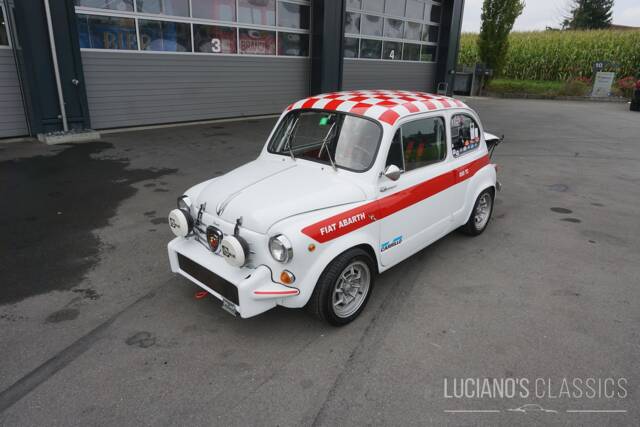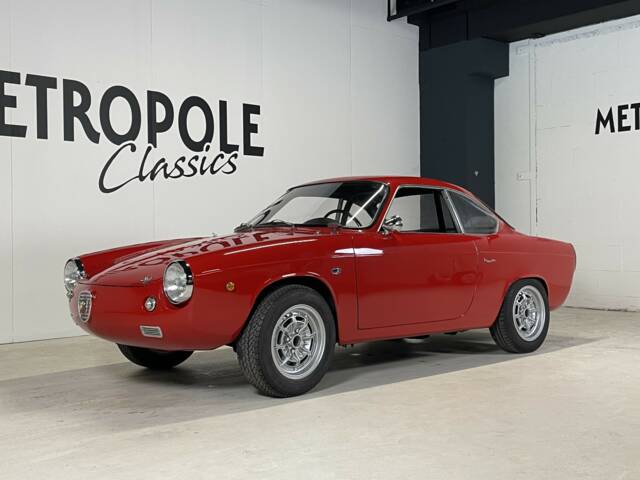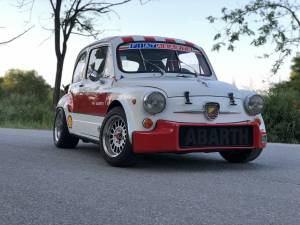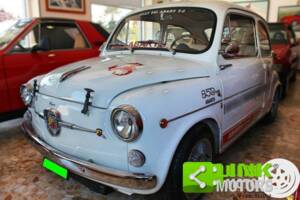Abarth 850 Classic Car for Sale
The Abarth 850 combines uncompromising motorsport engineering with lightweight Italian design. Based on the Fiat 600, the 850 TC model established Abarth’s reputation in touring car racing throughout Europe, especially at demanding circuits like the Nürburgring. Its powerful, modified engine and compact form deliver driving pleasure and raw authenticity—qualities sought after by true car enthusiasts.
Search results

1962 | Abarth Fiat 850 TC
ORIGINALE

1968 | Abarth Fiat 850 TC
REPLICA NURBURGRING PREPARATA PER LE CORSE

1964 | Abarth Fiat 850 TC
Kleiner Motor, grosser Mythos: Der Abarth 850 T.C. ist pure Leidenschaft im Format eines David-gegen-Goliath.

1959 | Abarth 850 Scorpione Allemano
Abarth 850 Allemano Coupé M0654

1963 | Abarth Fiat 850 TC
FIAT 850 Abarth TC
Introduction and history of Abarth 850
Abarth was founded in 1949 in Bologna by Karl (Carlo) Abarth, focusing originally on sports cars with small displacement engines. The company moved to Turin to be closer to Fiat, its main partner. Abarth quickly became renowned for tuning and transforming small cars—primarily from Fiat, but also from Alfa Romeo and Simca—for both road and racing use. The Abarth 850 series exemplifies this approach. The range includes several models based on the Fiat 500, 600, and later the 850, blending accessibility with high-performance tuning. From the early 1960s, the 850 TC (Turismo Competizione) became the brand's motorsport spearhead, collecting victories on circuits and hill climbs across Europe, most notably at the Nürburgring. The model gained its identity through a mix of Abarth’s technical innovations, distinctive design tweaks, and relentless track success.
Model history
The Abarth 850 traces its roots to the Fiat 600 platform, which Carlo Abarth had already successfully modified into versions like the 600 and 750 before scaling up. Introduced in 1961, the 850 TC emerged in response to motorsport regulations and Fiat's launch of the 600 D. The car’s immediate predecessor was the Abarth 700S, and its lineage continued with models such as the 1000. Notably, the Abarth 850’s evolution spawned versions like the 850 GT and the famed Nürburgring variants, all benefiting from escalating power outputs and refined chassis set-ups. Street-legal 'Stradale' editions mirrored competition cars, and Abarth even produced transformation kits allowing enthusiasts to convert standard Fiat 600s themselves—giving rise to the term “Abarthisation” in 1960s Italian car culture.
Highlights of the Abarth 850
The Abarth 850 TC offered technical refinements rare for its size in the early 1960s: lightweight construction, distinctive open rear engine lid for cooling during races, an aggressive trumpet-style exhaust, and a stripped-out interior tailored for competition. Motorsport victories were numerous in the 850-cc category, especially in grueling events like the Nürburgring 6 Hours. Originality is prized—cars with 'matching numbers' or special Abarth features (badges, steering wheel, specific instruments) are particularly valued. Rarity is underlined by the fact that many produced cars were dedicated race machines, not registered for road use.
Technical data
Special Editions and Collectible Models
Several special variants exist within the Abarth 850 family. The TC Nürburgring, launched after the 1961 race victory, featured enhanced engine tuning and revised suspension. The Stradale version (Abarth 850 TC Nürburgring Stradale) introduced unique, rear-hinged doors on later models and stands out for its rarity. The TC/SS and Nürburgring Corsa further increased output and included technical upgrades. Factory-original ‘matching numbers’ cars (chassis and engine) and those with period-correct racing modifications, like roll cages and branded instrumentation, command the most attention among collectors.
Weak Spots and Common Issues
While robust in competition, the Abarth 850’s high-performance state means prospective owners must pay close attention to engine and suspension condition. Key points for inspection include:
- Signs of previous competition use or modifications that may compromise reliability
- Matching numbers and authenticity, given the prevalence of replicas or heavily upgraded Fiat 600 base cars
- Wear on original racing equipment (brakes, suspension, and cooling modifications)
- Restoration quality, especially regarding non-factory upgrades
- Rust, particularly in structural areas and floor panels, as many vehicles have seen intensive or prolonged use Originality, careful maintenance, and period-correct restoration add significant value and reduce future issues.
Engine and Performance, Transmission and Handling
The Abarth 850’s engineered-for-competition design delivers remarkable agility, immediate throttle response, and a characteristic exhaust note. The rear-engine layout, combined with extensive Abarth chassis tuning—bespoke springs, dampers, and anti-roll bars—results in nimble handling even under race conditions. Original Cromodora magnesium wheels and competition disc brakes (on many models) further sharpen braking and cornering. The power-to-weight ratio guarantees impressive acceleration and nimbleness—a core aspect of its appeal both on circuit and open road. - Abarth 850 TC Nürburgring: Up to 55 PS, reinforced axles, dedicated suspension, specialized for endurance racing.
- Abarth 850 TC Stradale: Rare road-going version, often featuring unique door layout and badges.
- Custom and “Abarthised” Fiat 600 conversions: Enthusiasts’ adaptations, though value hinges on authenticity and quality of upgrade.
Interior, Comfort, Exterior and Design
The Abarth 850 stands out visually with features engineered for competition: open rear engine lid struts, flared rear arches for wider racing tyres, and signature Abarth badging. Interiors, especially in TC/Corsa models, prioritise function—racing seats, roll cages, and minimal insulation heighten the driving experience. Options could include period-correct Sabelt harnesses, Sparco pedals, and Personal steering wheels. Exteriors typically sport the classic round headlamps and squat, purposeful stance, with wheels often finished in magnesium silver. Later models (Nürburgring Stradale) have distinctive, backwards-hinged doors—a visual cue of exclusivity. While accessories varied by original build and restoration choices, original instrumentation and wheel designs (Cromodora CD 57) are highly regarded.
Other relevant features
One of the unique aspects of the Abarth 850’s history is the widespread availability of original Abarth performance kits, allowing hobbyists—especially in 1960s Italy—to upgrade standard Fiat 600s independently. This culture of self-modding led to the term "Abarthisation," a point of pride among historic Italian car enthusiasts. Documentation and registration status matter: many cars today are either extensively modified originals or converted retrospectives. The model’s legacy in European touring racing also anchors its continued participation in vintage motorsport and brand gatherings.
Summary
The Abarth 850, especially in TC and Nürburgring forms, is a touchstone of 1960s motorsport engineering and culture. Its balance of lightweight chassis, rev-happy engines, and specialist tuning underpin an engaging driving experience. Today, originality and authentic Abarth modifications define value; collector interest and market activity are unmatched within the Abarth range. For drivers seeking true historical substance and track-bred dynamics, few models rival the Abarth 850’s pedigree, character, and enthusiast following.




